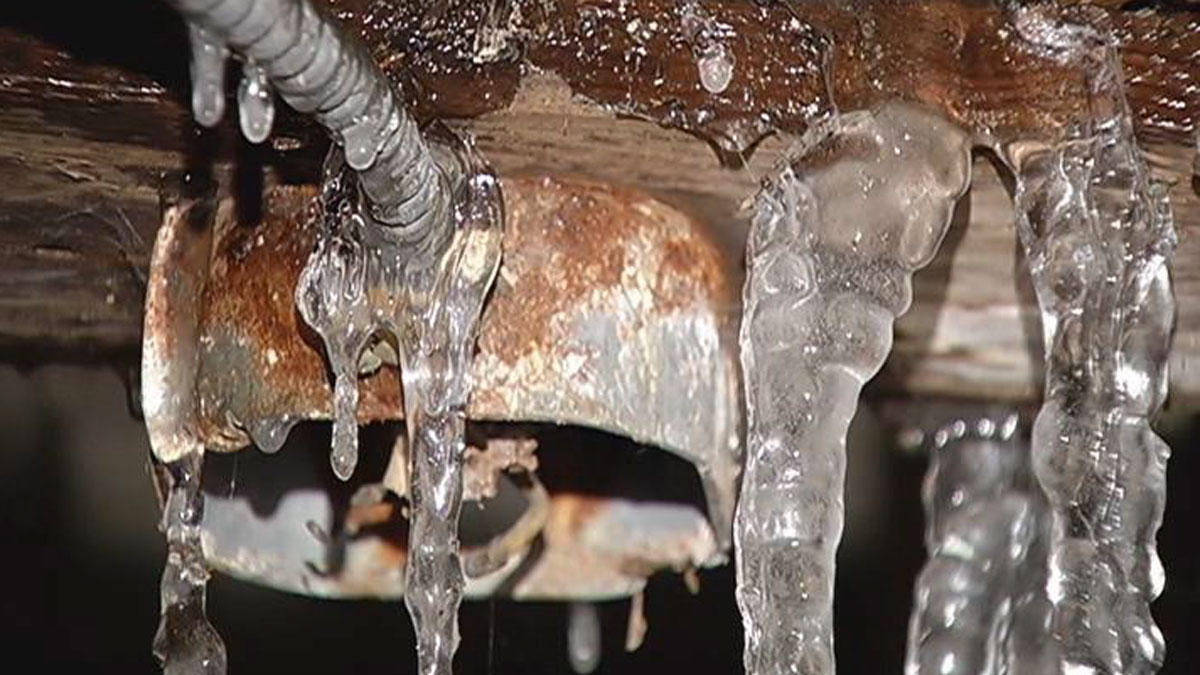Ways to Defend Your Pipes from Cold Weather: Expert Advice
Ways to Defend Your Pipes from Cold Weather: Expert Advice
Blog Article
Just how do you actually feel in regards to Helpful Tips to Prevent Frozen Pipes this Winter?

Cold weather can wreak havoc on your plumbing, specifically by freezing pipelines. Below's just how to stop it from taking place and what to do if it does.
Intro
As temperature levels decrease, the danger of frozen pipelines rises, potentially leading to expensive repair work and water damages. Recognizing how to avoid frozen pipelines is important for property owners in chilly environments.
Prevention Tips
Insulating prone pipes
Wrap pipes in insulation sleeves or make use of warm tape to shield them from freezing temperatures. Concentrate on pipelines in unheated or external areas of the home.
Home heating strategies
Keep indoor spaces properly heated, specifically areas with pipes. Open closet doors to allow cozy air to distribute around pipelines under sinks.
How to determine frozen pipes
Look for reduced water circulation from taps, unusual smells or sounds from pipelines, and visible frost on revealed pipelines.
Long-Term Solutions
Structural adjustments
Consider rerouting pipelines far from exterior wall surfaces or unheated locations. Add additional insulation to attics, cellars, and crawl spaces.
Upgrading insulation
Invest in high-quality insulation for pipelines, attics, and wall surfaces. Appropriate insulation aids maintain constant temperatures and reduces the risk of icy pipelines.
Securing Exterior Pipes
Yard pipes and outdoor taps
Detach and drain pipes garden tubes before winter. Set up frost-proof spigots or cover outside taps with shielded caps.
Understanding Icy Pipes
What triggers pipelines to freeze?
Pipelines ice up when revealed to temperature levels below 32 ° F (0 ° C) for prolonged periods. As water inside the pipelines ices up, it expands, taxing the pipeline wall surfaces and possibly causing them to break.
Risks and problems
Icy pipelines can bring about water system interruptions, property damages, and pricey repairs. Burst pipes can flooding homes and create considerable structural damage.
Indications of Frozen Water Lines
Recognizing frozen pipelines early can avoid them from breaking.
What to Do If Your Pipelines Freeze
Immediate activities to take
If you suspect frozen pipelines, keep taps open up to alleviate stress as the ice thaws. Utilize a hairdryer or towels soaked in warm water to thaw pipes slowly.
Final thought
Stopping icy pipelines needs positive measures and quick actions. By recognizing the causes, indications, and preventive measures, house owners can safeguard their plumbing throughout winter.
5 Ways to Prevent Frozen Pipes
Drain Outdoor Faucets and Disconnect Hoses
First, close the shut-off valve that controls the flow of water in the pipe to your outdoor faucet. Then, head outside to disconnect and drain your hose and open the outdoor faucet to allow the water to completely drain out of the line. Turn off the faucet when done. Finally, head back to the shut-off valve and drain the remaining water inside the pipe into a bucket or container. Additionally, if you have a home irrigation system, you should consider hiring an expert to clear the system of water each year.
Insulate Pipes
One of the best and most cost-effective methods for preventing frozen water pipes is to wrap your pipes with insulation. This is especially important for areas in your home that aren’t exposed to heat, such as an attic. We suggest using foam sleeves, which can typically be found at your local hardware store.
Keep Heat Running at 65
Your pipes are located inside your walls, and the temperature there is much colder than the rest of the house. To prevent your pipes from freezing, The Insurance Information Institute suggests that you keep your home heated to at least 65 degrees, even when traveling. You may want to invest in smart devices that can keep an eye on the temperature in your home while you’re away.
Leave Water Dripping
Moving water — even a small trickle — can prevent ice from forming inside your pipes. When freezing temps are imminent, start a drip of water from all faucets that serve exposed pipes. Leaving a few faucets running will also help relieve pressure inside the pipes and help prevent a rupture if the water inside freezes.
Open Cupboard Doors
Warm your kitchen and bathroom pipes by opening cupboards and vanities. You should also leave your interior doors ajar to help warm air circulate evenly throughout your home.

Do you like reading up on How to prepare your home plumbing for winter weather? Create a remark below. We would be pleased to find out your responses about this blog. Hoping that you visit us again in the near future. Are you aware of another individual who is interested in the niche? Please feel free to promote it. Bless you for your time. Don't forget to visit our website back soon.
Call Today Report this page